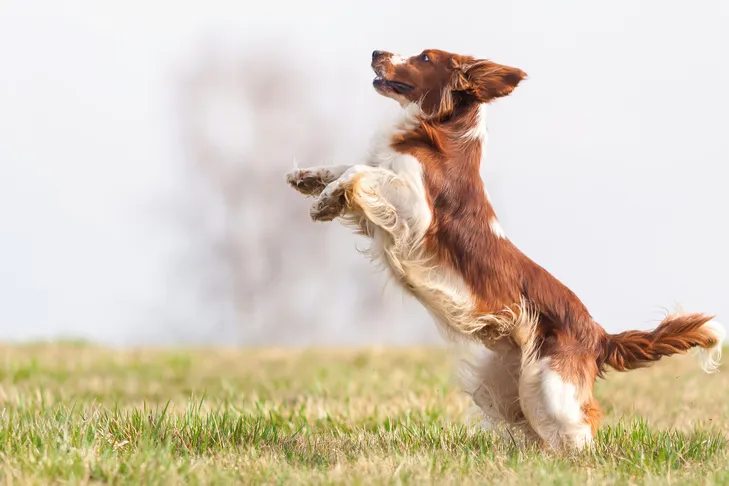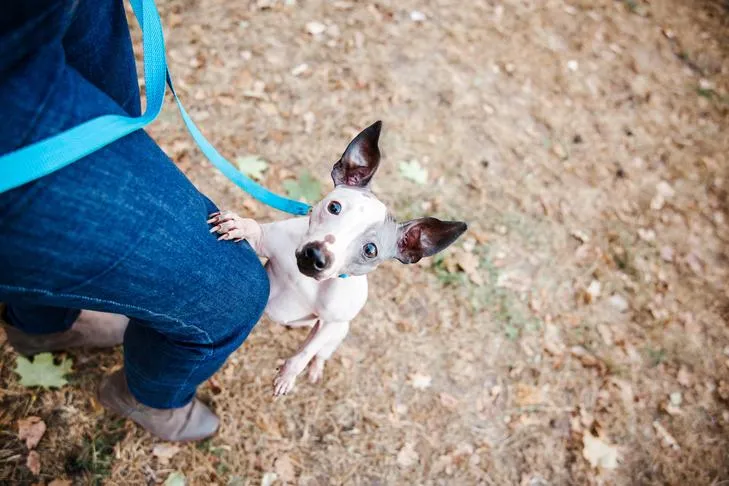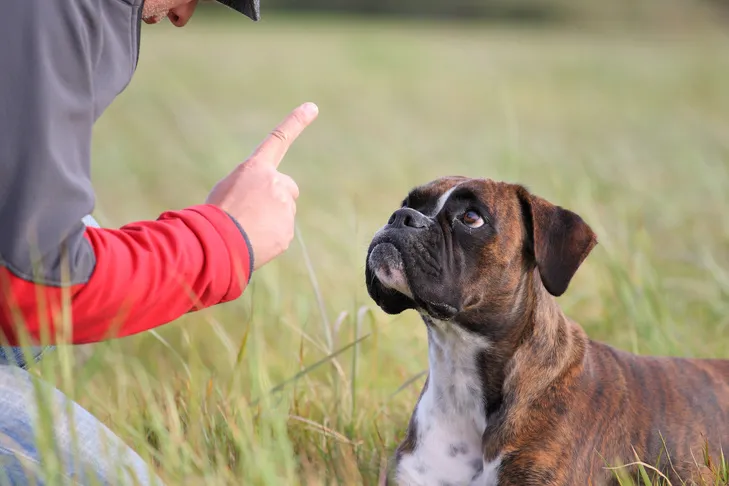One of the most common and often frustrating behaviors new puppy owners face is jumping up when greeting. While your adorable little furball might just be trying to get closer to your face for a happy “hello,” this seemingly innocent action can quickly become a problematic habit. Large breed puppies can grow into strong dogs that might accidentally knock people over, posing a particular risk to children and the elderly. Even small breeds can leave scratches or muddy paw prints on your clothes. The truth is, jumping is a natural canine way to seek attention and express excitement, making it an effective, albeit unwanted, strategy for your puppy to get noticed.
The key to resolving this common issue is to teach your puppy an appropriate greeting rule, such as “keep your front paws on the floor.” This provides a safer, more polite alternative for your pet to welcome you home and earn your cherished attention. By consistently applying these proven strategies, you can guide your puppy towards knowing exactly how to greet humans politely.
1. Only Reward When Your Puppy Has All Four Paws on the Floor
The most effective way to address unwanted behaviors like jumping is by teaching your puppy an incompatible alternative. This means instructing them on what to do, rather than just what not to do. In the context of jumping, this could involve teaching your puppy to keep all four paws firmly on the ground, as they cannot jump and stand simultaneously. Alternatively, you might prefer to teach them to sit or lie down for greetings. Whatever polite greeting rule you establish, it is crucial to only acknowledge and provide attention when your puppy is adhering to this rule. Consistency is paramount; avoid sending mixed signals, such as allowing jumping when you’re in casual clothes but not when dressed up. Every interaction should reinforce the desired behavior.
2. Give Immediate Attention When Your Puppy’s Feet Are Grounded
Puppies, much like all dogs, are wired to repeat behaviors that yield desired outcomes. Therefore, as soon as your puppy follows your greeting rule, such as having all four paws on the floor, immediately offer praise, gentle petting, or a small treat. Your puppy craves your attention and positive reinforcement, so ensure they receive this reward without delay, especially during the early learning stages. Avoid waiting until you’ve settled in, removed your coat, or put away your belongings. Delays can lead to impatience, prompting your puppy to revert to jumping or other attention-seeking behaviors. Prompt reinforcement helps your puppy quickly connect their appropriate action with your positive response.
3. Remove Attention the Moment Your Puppy Jumps Up
Conversely, to effectively eliminate jumping, you must stop reinforcing it. Any behavior you wish to extinguish should never be rewarded. If your puppy jumps on you, immediately withdraw the attention they are seeking. This can be achieved by calmly turning your back or walking away, signaling to your puppy that jumping achieves the opposite of their intention. The moment your puppy’s four paws are back on the floor, turn back and quietly offer praise and gentle petting. This consistent “attention on, attention off” response helps your puppy understand that their jumping behavior is a switch that makes your attention disappear.
 A lively Welsh Springer Spaniel puppy enthusiastically jumping up on its owner's legs outdoors, demonstrating common greeting behavior.
A lively Welsh Springer Spaniel puppy enthusiastically jumping up on its owner's legs outdoors, demonstrating common greeting behavior.
4. Set Your Puppy Up for Success with Structured Greetings
While ignoring jumping and rewarding proper greetings is effective, it can be a trial-and-error process that might frustrate your puppy. To accelerate learning and build confidence, proactively set your puppy up for success. If your rule is for them to sit, ask for a sit as soon as you enter. If it’s “four paws on the floor,” encourage them to remain standing calmly.
A particularly effective method to prevent jumping, especially with energetic puppies, is to scatter small, high-value treats on the floor as you greet them. Most puppies can’t resist a free goodie, and they certainly can’t jump while sniffing and eating treats off the ground. Be quick to scatter the food before your puppy even considers jumping, thereby rewarding their “four paws on the floor” behavior with both attention and a tasty incentive. As your puppy becomes more adept at polite greetings, you can gradually phase out the food rewards, relying more on verbal praise and petting. This proactive approach helps your puppy consistently practice the correct behavior, making learning more efficient and enjoyable. Teaching them to focus on the ground can also help with other manners like how to stop your dog from pulling on his leash by encouraging a calm demeanor.
5. Always Reward Proper Greeting Behavior Without Exception
Your puppy will learn polite greeting behavior much faster if their actions consistently and immediately influence your attention. “Four paws on the floor” gains attention, while jumping makes it disappear. This means you must always reward your puppy when they follow your established greeting rule. Even if you’ve endured a few minutes of persistent jumping, do not withhold your positive response once their feet are finally on the ground. Letting your irritation influence your reaction will only confuse your puppy and undermine the consistency of your training. For their learning to be solid, the rule must be reinforced every single time they get it right.
6. Avoid Grabbing or Pushing Your Puppy Away
Remember, your puppy is jumping to get your attention. Even what you perceive as a negative physical response—such as grabbing their paws, holding them, or pushing them away—is still a form of attention. This means you are inadvertently rewarding the very behavior you want to eliminate. Instead of reducing jumping, such actions can actually increase its frequency in the long run. Worse, for many puppies, this physical interaction can be misinterpreted as an invitation to engage in roughhouse play, leading them to jump back harder and more enthusiastically, believing it’s all part of a fun game. Maintaining calm and consistent boundaries is key to effective puppy training.
 An American Hairless Terrier puppy playfully jumping up on its owner's leg while outdoors, seeking attention.
An American Hairless Terrier puppy playfully jumping up on its owner's leg while outdoors, seeking attention.
7. Discard the “Knee Up” Method: It Harms Trust
You might have heard the suggestion to raise your knee to block your puppy’s chest as they jump to discourage the behavior. However, similar to grabbing or pushing, this physical intervention can be misinterpreted by some boisterous puppies as part of a game or an attempt to initiate rough play, exacerbating the problem rather than solving it. More importantly, for the majority of puppies, this method can create distrust and significantly erode the vital human-canine bond. Your puppy is simply trying to greet you with excitement, and responding with a perceived punishment can be deeply confusing and hurtful. In extreme cases, it could even cause physical injury. A puppy that doesn’t trust its owner may develop other behavioral issues, such as anxiety or reluctance to address aggression towards other dogs in training scenarios.
8. Keep Greetings Calm and Low-Key During Learning Phases
Puppies often struggle with emotional self-control, especially when overwhelmed with excitement at seeing you. Resisting the natural urge to jump and instead obeying a new greeting rule requires a significant amount of effort from them. You can make this easier by keeping greetings calm and low-key, particularly while your puppy is still learning. Puppies are highly attuned to our emotions; if you are overly excited, they will mirror that energy. Instead, maintain a calm and quiet demeanor, even when you offer praise. As your puppy begins to grasp the concept of polite greetings, you can gradually increase your enthusiasm, little by little, until you can express as much joy as they do without encouraging jumping.
9. Proactively Prevent Your Puppy From Jumping on Guests
Your training efforts aren’t solely reliant on your actions. Other family members, guests, and even strangers encountered on walks can unintentionally reinforce your puppy’s jumping behavior if you’re not proactive. To prevent this, utilize management techniques. For instance, keep your puppy on a leash when guests arrive, limiting their ability to approach and jump. Even better, teach your puppy a “place” command, sending them to a designated mat or bed, or use crate training to keep them in their crate near the door until they are calm. Baby gates can also be effective tools to block access to the entryway. Consistency in these preventative measures reinforces the boundaries you’re establishing for your puppy’s polite greetings.
 A focused Boxer puppy lying down outdoors, being calmly trained by a man, demonstrating good obedience during a session.
A focused Boxer puppy lying down outdoors, being calmly trained by a man, demonstrating good obedience during a session.
10. Educate Guests and Strangers on Your Puppy’s Greeting Rules
Don’t hesitate to clearly communicate your puppy’s greeting expectations to guests and even strangers. While your puppy is still in the learning phase, politely ask people to completely ignore your puppy until you give the signal that it’s okay to interact. It’s often best to avoid interactions with strangers entirely until your puppy has mastered polite greetings with familiar friends and family who you know will cooperate with your training methods. When encountering strangers, use a “watch me” cue or distract your puppy with a favorite toy or a “hand touch” command until the person has passed. This proactive communication and management will significantly help your puppy learn that calm, four-on-the-floor greetings are the only way to earn positive attention, setting them up for a lifetime of polite interactions.
Conclusion
Teaching your puppy to stop jumping on you is a journey that requires patience, consistency, and a clear understanding of canine behavior. By focusing on positive reinforcement, teaching alternative behaviors, and consistently managing situations, you empower your puppy to learn appropriate ways to express their joy and affection. Remember, your puppy isn’t trying to be naughty; they’re simply trying to communicate. With the right guidance, they can become well-mannered companions who greet everyone politely. Embrace these training tips, and you’ll build a stronger bond with your puppy, fostering a harmonious home environment where polite greetings are the norm. For more insights into common puppy behaviors and advanced training techniques, explore Dog Care Story for a wealth of expert advice.
